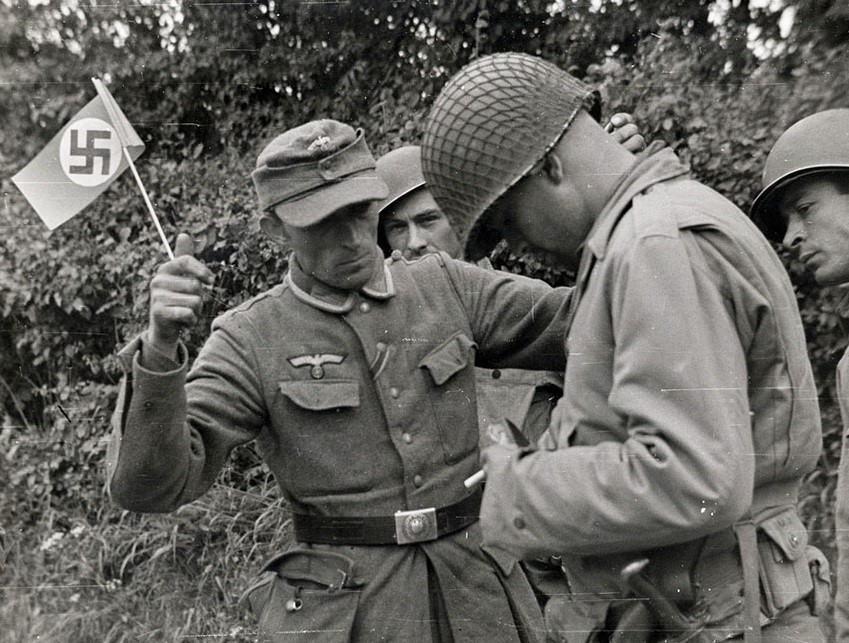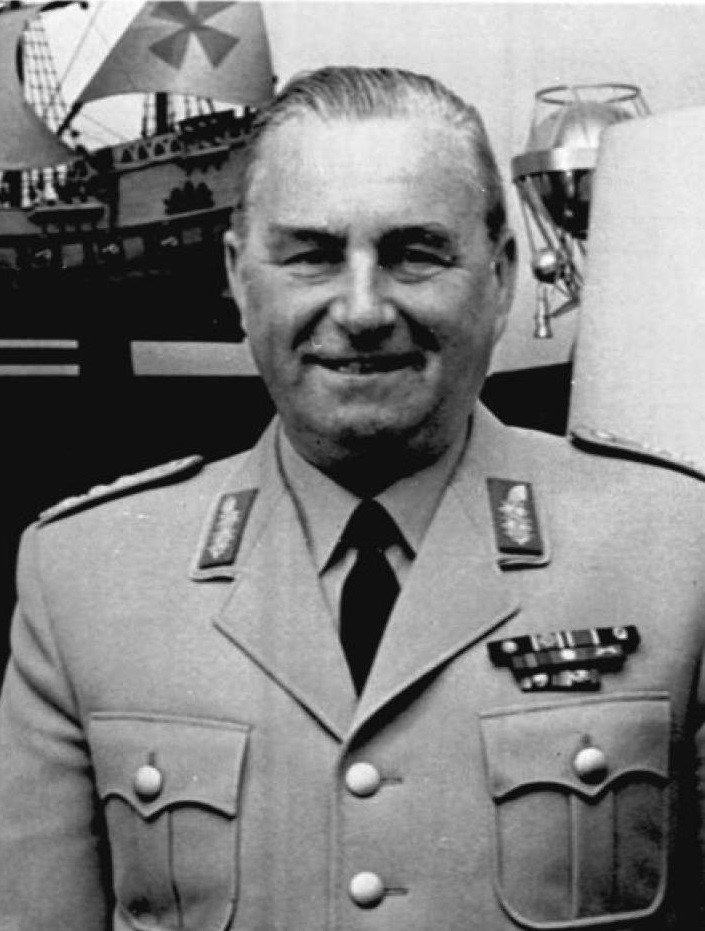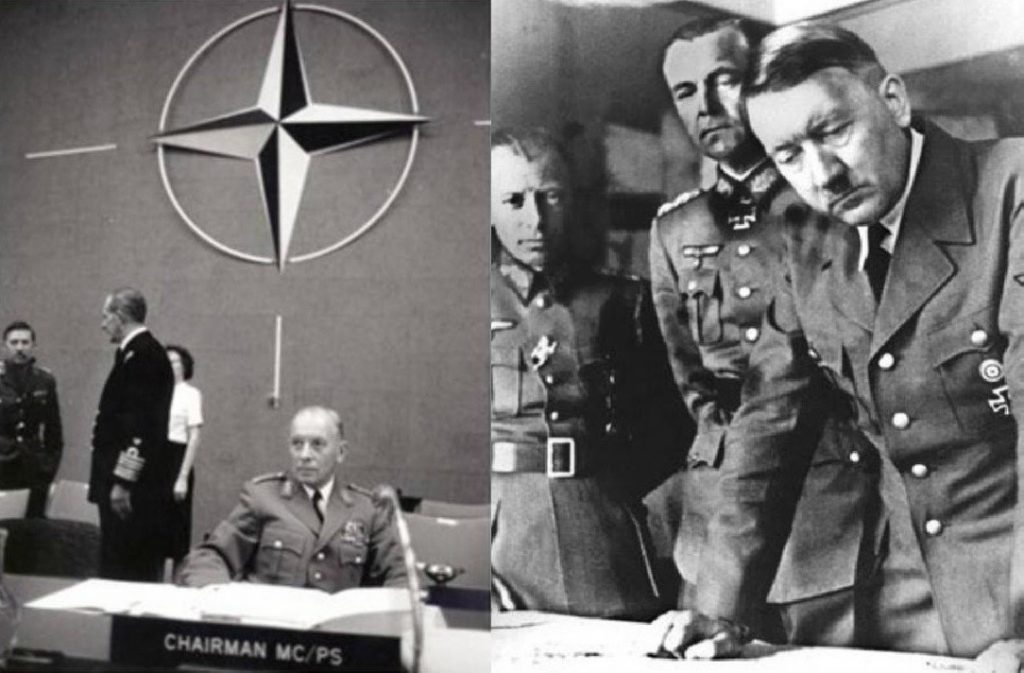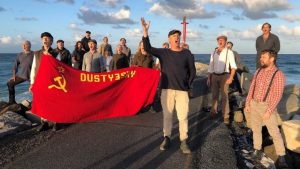Now, you read that title and I’m sure you sneer. Don’t be shy, I would too when just reading the title on some random website. Obviously a bit of clickbait, right? Well, no. There was an actual secret army of Nazis that existed in post-war West Germany. It was never activated obviously, but it was there and had a membership in the thousands, comprised mainly of former officers of the Wehrmacht and Waffen SS. Do I have proof for this claim? Yes I do! An abundance of proof from the west German archives proving state acknowledgement of its existence! So… What the fuck, right? Let’s dig in and explain.
For those time travelers among you, the Nazis lost WW2 quite badly. To the point that their country was carved up until 1989 as a direct result of how badly they lost, badly. Further, Nazis were made very illegal. Well… Without getting into the whole ‘Western governments recruiting Nazis’ shenanigans, which I’ll surely bring up another time, Nazism was broadly quite illegal in Germany in the immediate post-war era and arguably up to the present day.
In the immediate post-war, things were at their head. Between 1945 and 1950, around 400,000 Germans were held in internment camps. Most in the Eastern zone sure, but a great many in the west as well, which makes it surprising that this secret army was apparently first formed in 1949. That said, well over a million German citizens were barred from most workplaces in this period due to their political history, no-doubt factoring into the disgruntlement that may have formed the nucleus of this secret army. It was in 1951 that denazification in the western zone was completely abandoned, partly due to feeling that it was ineffective, also due to a belief that Nazis would be a useful bulwark against the Soviets in the growing Cold War. Indeed, it was 1951 that the declassified documents claim that the secret army was first acknowledged by the west German forces.
Now, first thing. West Germany did not have an army until 1955. This means that during this transitional period, the secret army was the only German army, with the East German army being formed in 1956. The only military presence prior were occupying forces in the various zones, with German participation highly limited, particularly for ex-Nazis. You might argue that there was no independent German state at this time, but that’s not so! The Federal German Republic and the German Democratic Republic were each founded in 1949. So between 1949 and 1955, the independent West German government (with foreign military presence) was aware of a secret Nazi army and chose to do… Nothing.
So anyway, taking a break from flinging shit at the shady motives of Germany itself, let’s take a look at the secret army itself. Secret army is a shit name, but inevitable when your army is so secret that having a name would just be counter-productive. Really, it’s more comparable to the Freikorps of post-WW1 Germany. Disaffected soldiers in a country that no longer had an army to call their own, so merely acting as enforcers of vigilante ‘justice’ and occasional mercenaries of the state. Indeed, the reason for West Germany and the allies not cracking down on them is believed to have been so that they could function as a quick military response to East German invasion, without technically violating the rules against having a national German army at the time. With the outbreak of the Korean war, it’s not a ridiculous assertion, but of course, this never came to pass.
An unofficial name is given to the secret army, that being the ‘Schnez-Truppe’, that is Schnez Organization. Who or what the fuck is Schnez? Well, that would be Albert Schnez, a veteran of both the Wehrmacht and earlier Reichswehr who was seen as the leader of this ‘secret army’. I’m going to go ahead and keep calling it the secret army all the same.
The secret army initially started with around 2,000 members. A modest size no doubt collected from various veterans groups that had been operating in secret to avoid denazification. As denazification was gradually ramped down, their ability to expand greatly increased, with a suggested peak of 40,000. Were the army to become suddenly visible in the case of an invasion, one can imagine it expanding that exponentially. For an army that didn’t officially exist, the numbers are quite shocking.
Arms were acquired from the German police, while finances were obtained from sympathetic business figures who’d profited under Hitler and were not purged in denazification. This was enough to make them notable by 1951 as their strength built. While one may assume that west German intelligence merely discovered the group and decided not to pursue them, that would be a gross underestimation of the sheer degree of collaboration. Indeed, it appears that Schnez approached the West German government to offer his services.
On the 24th of July 1951, Schnez met with Reinhard Gehlen, head of the so-called ‘Gehlen Organization’, an anti-Soviet counterintelligence group that worked with the CIA, the west German state and notably employed many ex-Nazis, including Karl Silberbauer, the Gestapo officer who ‘arrested’ Anne Frank and sent her to her death. Relations between the two groups were cordial and knowledge of the secret Nazi army went all the way to Konrad Adenauer, the first chancellor of west Germany. Relations were somewhat tempered by concerns of the secret army’s ally, Otto Skorzeny, who I assure you, is worthy of an article all his own. One might say that his faction represented the SS to Schnez’s SA.
In time, the secret army became of tactical use to the state. While its military potential wasn’t to be made known unless absolutely necessary, they formed an even more secret intelligence organization that conducted spy campaigns against suspected leftists in West Germany. Somewhat disturbingly, at least one of these spy reports made mention of a target’s status as a ‘Half-Jew’, should one doubt the racist ideology that remained at the root of such an organization.
But then… What happened to this secret army of evil? Well, the end isn’t quite that exciting. They simply became irrelevant. Their whole purpose to the West German state was as a replacement for the army. In 1955, the west German ‘Bundeswehr’ became a thing and suddenly the secret army was redundant. To crackdown on them then would have been pointless, so it would appear that they merely faded out of existence. Schnez himself later became a Lieutenant General within the Bundeswehr, with many more officers becoming high up within it. Perhaps most disturbingly, Adolf Heusinger not only had been Chief of General Staff of the German army during WW2 (having stood next to Hitler during the famous July plot assassination attempt), but he later became head of the entire West German military from 1957 to 1961… And Chairman of the fucking NATO Military Committee from 1961 to 1964.
Unless you think that was a fluke, Hans Speidel was another Nazi general who was part of the secret army, only to become one of the founders of the Bundeswehr and later Commander-in-Chief of the Allied Land Forces Central Europe from 1957 to 1963. Post-war West Germany and indeed, 50s and 60s NATO was crawling with Nazis. It’s no surprise that the Berlin wall was officially known as the ‘Anti-Fascist Protection Rampert’.
In the end, the secret army was certainly successful in the first part of its informal title. Knowledge of it was practically nonexistent until the declassification and rediscovery of files relating to it in 2014. Its actual impact is negligible, but what its existence tells us about the mindset of post-war, early-Cold War western and West German policy is unquestionable. Now, I don’t want to suggest that west Germany was okay with returning to fascism. They definitely weren’t. While Nazis comprised a great deal of their staff and they were willing to turn a blind eye to fascist activities, the pushing away of radicals like Skorzeny (which I will assuredly address in more detail another time) is proof enough that their risk-taking could only go so far. All it really demonstrates is that history had repeated itself.
Nazism rose in Germany because the liberal, democratic systems preferred radical right-wing extremism to the threat of communism. When Rosa Luxemburg and Karl Liebknecht rose up in revolution during the Weimar era, it was the fascist militias of the Freikorps that put them down. When communists seemed poised to overtake the country in the 30s, it was the liberal state that enfranchised the Nazis and the SA to more effectively put them down. This time around, communism wasn’t quite the same threat. The east never invaded and there was no revolution in the west. But history has shown what easily could have happened if either of those things had happened… And then failed. Give fascists an inch and they’ll take a mile.




